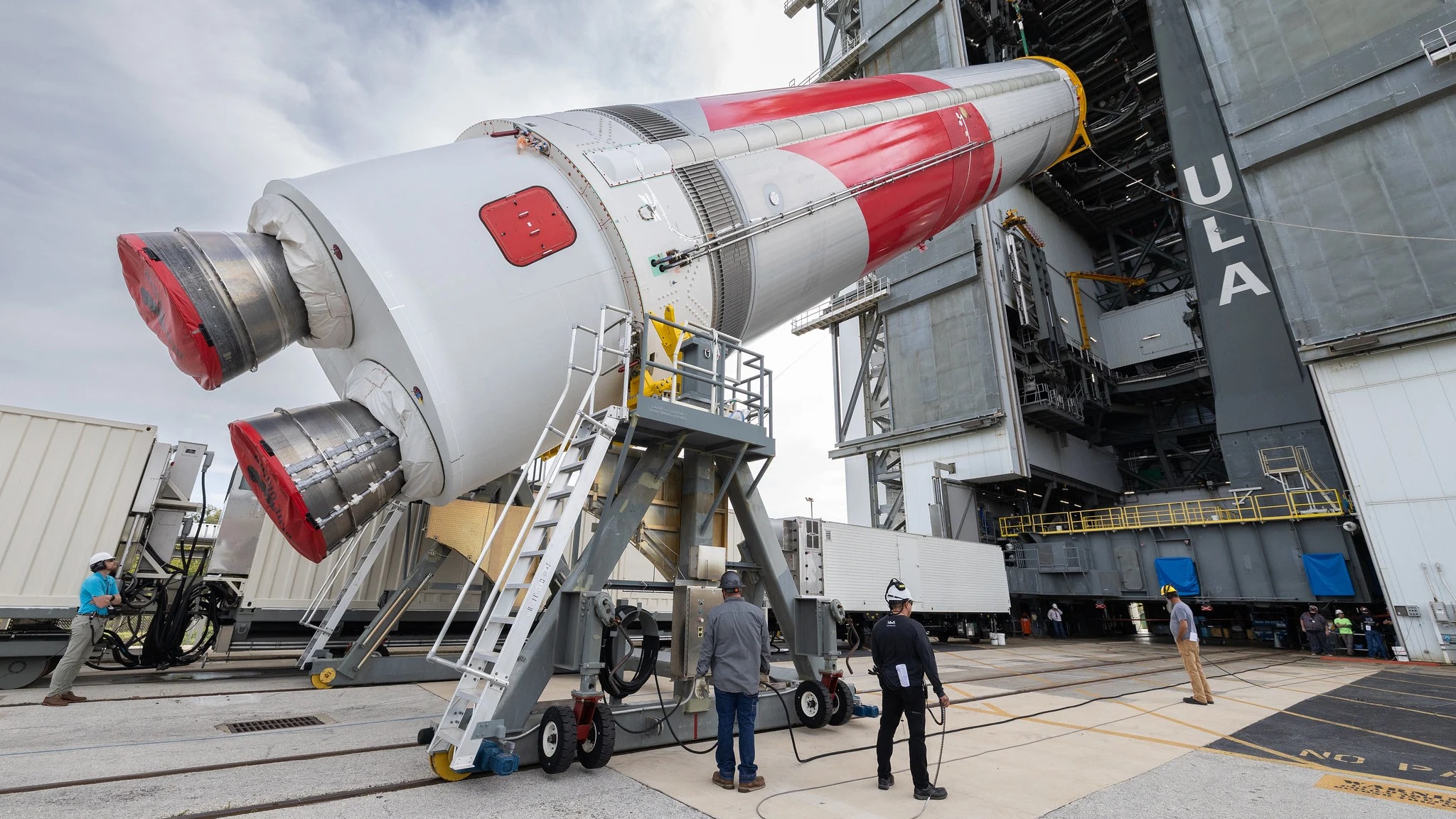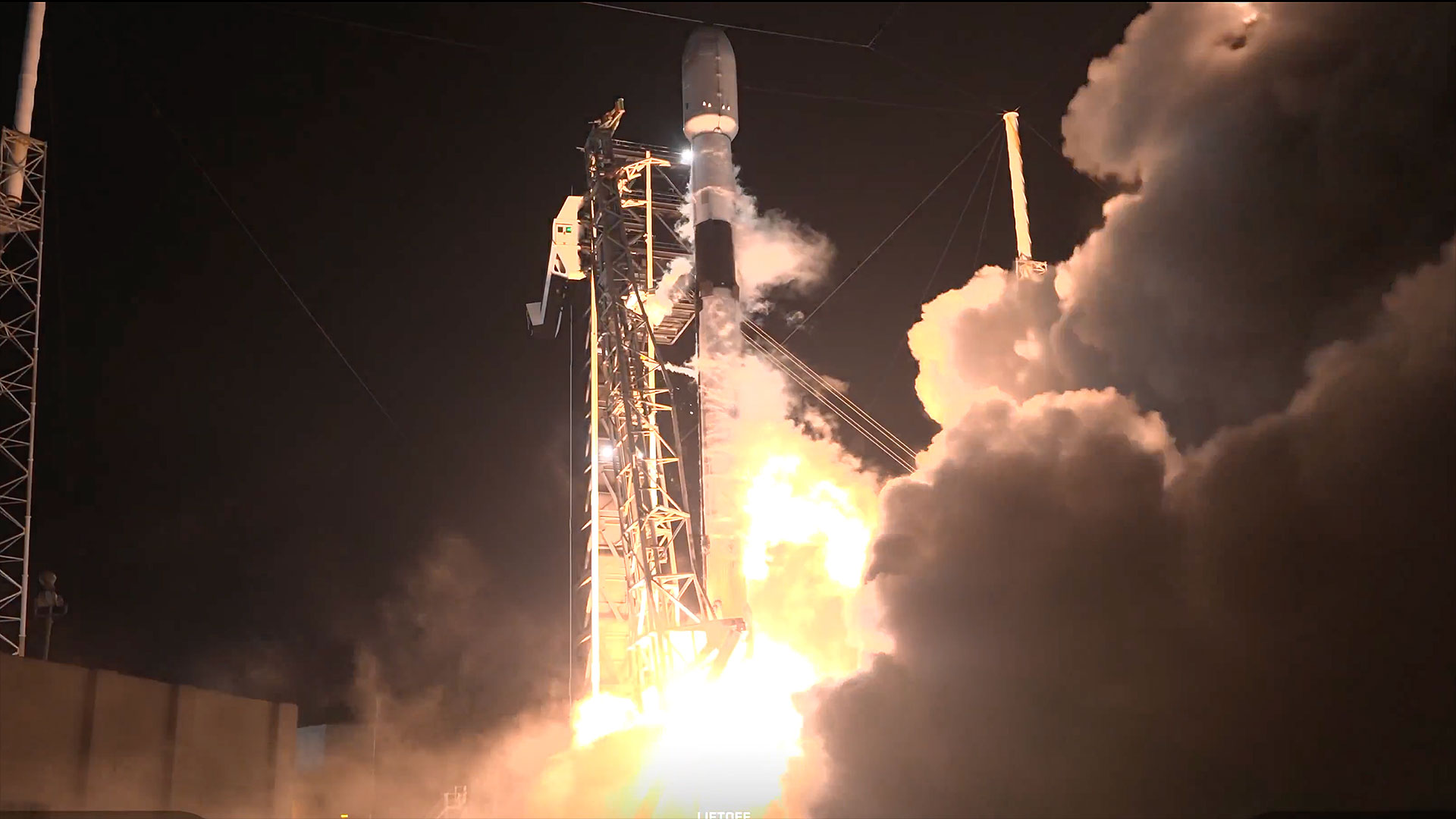Stack it up! ULA assembles 1st Vulcan Centaur rocket ahead of debut launch (photos)
The powerful Vulcan Centaur could fly for the first time in the next few months, if testing campaigns go to plan.

A powerful new rocket is all stacked up.
The Vulcan Centaur, a next-generation booster from long-time rocket maker United Launch Alliance (ULA), has been assembled at Cape Canaveral Space Force Station in Florida ahead of its debut launch, which is targeted to take place in the next few months.
Stacking occurred on Jan. 25 and Jan. 26. Testing of the rocket stages, launch platform and ground systems are expected "over the next few weeks" before Vulcan rolls out to the launch pad for fuel loading and countdown practice, ULA officials wrote in a blog post on Monday (Feb. 6).
Once that's all done, Vulcan will complete ground testing with a simulated countdown and a brief firing of its main engines to get it ready for its first mission, called Certification Flight-1.
Related: United Launch Alliance's 1st Vulcan Centaur rocket arrives in Florida for debut flight
Embarking on a bold new era to broaden affordable access to space, the inaugural ULA #VulcanRocket now stands assembled at its Florida launch site for pre-flight testing! #CountdowntoVulcanRead more in the blog: https://t.co/Nx7YazbXiz pic.twitter.com/rohxGf3QOoFebruary 6, 2023
Vulcan Centaur will replace ULA's long-standing Atlas V and Delta IV rockets, which are certified for commercial, government and national security missions by the U.S. Space Force.
Vulcan Centaur is a 202-foot-tall (67 meters) rocket equipped with a Centaur V upper stage and up to six solid rocket boosters. The first stage is powered by two BE-4 methane-liquid oxygen engines built by Blue Origin, Jeff Bezos' spaceflight company.
Breaking space news, the latest updates on rocket launches, skywatching events and more!

Certification-1 is tentatively targeted for the first quarter of 2023. The mission will loft two demonstration satellites for Amazon's Project Kuiper broadband constellation, along with a Celestis Memorial Spaceflight payload and a commercial moon lander called Peregrine.
Pittsburgh-based company Astrobotic, the maker of Peregrine, is aiming to be one of the first private outfits to land on the moon in 2023; given several missions are en route or readying for lunar launch, it is hard to predict if Peregrine will be first on the surface.
Elizabeth Howell is the co-author of "Why Am I Taller?" (ECW Press, 2022; with Canadian astronaut Dave Williams), a book about space medicine. Follow her on Twitter @howellspace. Follow us on Twitter @Spacedotcom or Facebook.
Join our Space Forums to keep talking space on the latest missions, night sky and more! And if you have a news tip, correction or comment, let us know at: community@space.com.

Elizabeth Howell (she/her), Ph.D., was a staff writer in the spaceflight channel between 2022 and 2024 specializing in Canadian space news. She was contributing writer for Space.com for 10 years from 2012 to 2024. Elizabeth's reporting includes multiple exclusives with the White House, leading world coverage about a lost-and-found space tomato on the International Space Station, witnessing five human spaceflight launches on two continents, flying parabolic, working inside a spacesuit, and participating in a simulated Mars mission. Her latest book, "Why Am I Taller?" (ECW Press, 2022) is co-written with astronaut Dave Williams.
